The KY1N Memorial List
Scheduled Amateur Radio Volunteer Examinations - CT MA ME NH RI VT
3/23/10
Jim, WW1Y, Editor
Date Time Contact Location Phone
03/24/10 19:30 Nick Altenbernd, KA1MQX Cambridge MA 617-253-3776
03/24/10 19:00 *Paul Upham, KD1YH Lunenburg MA 978-597-6535
03/26/10 18:00 David Cote, W1FAB Holyoke MA 413-575-2950
03/27/10 09:00 William D Wilson, K1IN Bloomfield CT 860-869-1059
03/27/10 12:00 +Daniel Lee, W1DFL Danvers MA 978-352-4513
03/27/10 12:00 Bradley Saunders, N1GZB Lewiston ME
03/27/10 09:00 Bob Jones, WB1P Slatersville RI 401-333-4787
04/03/10 09:00 *Don Tarbet, KD1XU Bangor ME 207-327-1453
04/03/10 10:30 Larry Houbre, AA1FS Dartmouth MA 508-991-6055
04/03/10 10:00 *Celeste Dean, W1CMD South Yarmouth MA
04/08/10 19:00 Louis Mester, W1CH Providence RI 401-263-6045
04/08/10 19:00 Kevin Cellini, N1KGM Trumbull CT 203-268-1843
04/09/10 18:30 Ralph T Stetson III, KD1R Burlington VT 802-878-6454
04/10/10 09:00 *William J Needham, K1WN Braintree MA 781-843-4400
04/10/10 12:00 Gregory Fitch, KB1EZJ Conway NH 603-759-6671
04/10/10 09:00 Ben Fleck, K2LYE Falmouth MA 508-540-2583
04/10/10 09:00 Steven Ewald, WV1X Newington CT 860-594-0265
04/11/10 12:00 Bob Quinn, WV1A Gloucester MA 978-283-4660
04/11/10 10:00 Richard Williamson, WA1YQE Milford CT 203-877-5020
04/12/10 19:00 *Jim Clogher, N1ICN Boston MA 617-364-4658
04/13/10 19:00 Tom Marshall, AA1SM Farmington ME 207-779-0589
04/13/10 19:00 Lawrence Polowy, KU1L Thomaston CT 860-283-4089
04/14/10 19:00 Gary Frascarelli, W1GFF Billerica MA 978-453-1100
04/15/10 19:30 Louis Harris, N1UEC Canton MA 508-668-0858
04/15/10 19:00 Thomas Jaworski, WA1MJE Pittsfield MA 413-528-9002
04/15/10 18:30 John Ruggiero, N2YHK Worcester MA 508-982-0617
04/16/10 18:30 Walter Styslo, KA1DFH Farmington CT 860-529-8474
04/17/10 09:00 Bill Wade, K1IJ Marlborough MA 617-699-3670
04/17/10 10:00 Bryce Rumery, K1GAX South Portland ME 207-799-1116
04/18/10 16:00 William Mcgarvey, AA1ZR Calais ME 207-853-2951
04/19/10 19:00 Richard Strycharz, KD1XP Amherst MA 413-665-2211
04/19/10 19:00 Skip Denault, KB1CNB Fall River MA 774-644-3469
04/20/10 12:00 Adam Woodbury, K1ADW Bedford MA 781-271-3062
04/20/10 19:00 Paul Lux, K1PL Portland CT 860-635-1742
04/20/10 18:30 Wilburn A Scott, WA1YNZ Presque Isle ME 207-455-8333
04/21/10 19:30 Nick Altenbernd, KA1MQX Cambridge MA 617-253-3776
04/21/10 19:00 Peter Keyes, NU1W Milford CT
04/23/10 18:00 David Cote, W1FAB Holyoke MA 413-575-2950
04/24/10 09:00 William D Wilson, K1IN Bloomfield CT 860-869-1059
04/24/10 15:00 William Mcgarvey, AA1ZR Calais ME 207-853-2951
04/24/10 12:00 +Daniel Lee, W1DFL Danvers MA 978-352-4513
04/24/10 09:00 Jack P Garforth, N1JK Middletown RI 401-683-2250
04/24/10 09:00 Norm Smith, NY1B Rockland ME 207-354-6853
04/28/10 19:00 *Paul Upham, KD1YH Lunenburg MA 978-597-6535
05/01/10 10:30 Larry Houbre, AA1FS Dartmouth MA 508-991-6055
05/01/10 10:00 *Celeste Dean, W1CMD South Yarmouth MA
05/02/10 10:00 Richard Williamson, WA1YQE Milford CT 203-877-5020
05/03/10 10:00 *Bryce Rumery, K1GAX Topsham ME 207-799-1116
05/08/10 08:45 *William J Needham, K1WN Braintree MA 781-843-4400
05/08/10 09:00 Ben Fleck, K2LYE Falmouth MA 508-540-2583
05/08/10 09:00 Steven Ewald, WV1X Newington CT 860-594-0265
05/09/10 12:00 Bob Quinn, WV1A Gloucester MA 978-283-4660
05/10/10 19:00 *Jim Clogher, N1ICN Boston MA 617-364-4658
05/11/10 19:00 Lawrence Polowy, KU1L Thomaston CT 860-283-4089
05/12/10 19:00 Gary Frascarelli, W1GFF Billerica MA 978-453-1100
05/12/10 19:15 *James Weckback, W1EQW Framingham MA 508-435-6487
05/13/10 19:00 Louis Mester, W1CH Providence RI 401-263-6045
05/13/10 19:00 Kevin Cellini, N1KGM Trumbull CT 203-268-1843
05/14/10 18:30 Ralph T Stetson III, KD1R Burlington VT 802-878-6454
05/15/10 09:00 Bill Wade, K1IJ Marlborough MA 617-699-3670
05/17/10 19:00 Skip Denault, KB1CNB Fall River MA 774-644-3469
05/18/10 19:00 Paul Lux, K1PL Portland CT 860-635-1742
05/19/10 19:30 Nick Altenbernd, KA1MQX Cambridge MA 617-253-3776
05/19/10 19:00 Peter Keyes, NU1W Milford CT
05/20/10 19:30 Louis Harris, N1UEC Canton MA 508-668-0858
05/21/10 18:30 Walter Styslo, KA1DFH Farmington CT 860-529-8474
05/22/10 09:00 William D Wilson, K1IN Bloomfield CT 860-869-1059
05/22/10 12:00 +Daniel Lee, W1DFL Danvers MA 978-352-4513
05/22/10 09:30 Lawrence Polowy, KU1L Goshen CT 860-283-4089
05/22/10 09:00 Bob Jones, WB1P Slatersville RI 401-333-4787
05/24/10 19:00 Willard Boutwell, N1EWK Northfield MA 413-774-4669
05/26/10 19:00 *Paul Upham, KD1YH Lunenburg MA 978-597-6535
05/28/10 18:00 David Cote, W1FAB Holyoke MA 413-575-2950
05/29/10 14:30 George Rinalducci, KB1KBC Greenland NH 603-231-1392
06/02/10 10:00 Richard Williamson, WA1YQE Milford CT 203-877-5020
06/05/10 10:30 Larry Houbre, AA1FS Dartmouth MA 508-991-6055
06/05/10 09:00 *Don Tarbet, KD1XU Hermon ME 207-789-5376
06/05/10 09:00 Thomas Jaworski, WA1MJE Pittsfield MA 413-528-9002
06/05/10 10:00 *Celeste Dean, W1CMD South Yarmouth MA
06/08/10 19:00 Lawrence Polowy, KU1L Thomaston CT 860-283-4089
06/09/10 19:00 Bruce Anderson, W1LUS Billerica MA 978-851-2886
06/09/10 19:00 Gary Frascarelli, W1GFF Billerica MA 978-453-1100
06/10/10 19:00 Louis Mester, W1CH Providence RI 401-263-6045
06/10/10 19:00 Kevin Cellini, N1KGM Trumbull CT 203-268-1843
06/11/10 18:30 Ralph T Stetson III, KD1R Burlington VT 802-878-6454
06/12/10 11:30 Frank Sileo, N1PE Bethel CT 203-438-0218
06/12/10 09:00 Ben Fleck, K2LYE Falmouth MA 508-540-2583
06/12/10 09:00 Jack P Garforth, N1JK Middletown RI 401-683-2250
06/13/10 12:00 Bob Quinn, WV1A Gloucester MA 978-283-4660
06/14/10 19:00 *Jim Clogher, N1ICN Boston MA 617-364-4658
06/15/10 19:00 Paul Lux, K1PL Portland CT 860-635-1742
06/16/10 19:00 Peter Keyes, NU1W Milford CT
06/17/10 19:30 Louis Harris, N1UEC Canton MA 508-668-0858
06/18/10 18:30 Walter Styslo, KA1DFH Farmington CT 860-529-8474
06/19/10 09:00 Charlie French, K1CRF Bedford NH 603-487-5201
06/19/10 09:00 William D Wilson, K1IN Bloomfield CT 860-869-1059
06/19/10 09:00 Bill Wade, K1IJ Marlborough MA 617-699-3670
06/19/10 09:00 Jim Heedles, WW1Y Nashua NH 603-673-7395
06/19/10 10:00 Bruce Beford, N1RX Windsor VT 603-863-1698
06/21/10 19:00 Skip Denault, KB1CNB Fall River MA 774-644-3469
06/23/10 19:30 Nick Altenbernd, KA1MQX Cambridge MA 617-253-3776
06/23/10 19:00 *Paul Upham, KD1YH Lunenburg MA 978-597-6535
06/25/10 18:00 David Cote, W1FAB Holyoke MA 413-575-2950
06/26/10 12:00 +Daniel Lee, W1DFL Danvers MA 978-352-4513
06/27/10 09:00 *Richard Williamson, WA1YQE Milford CT 203-877-6514
07/03/10 10:30 Larry Houbre, AA1FS Dartmouth MA 508-991-6055
07/03/10 10:00 *Celeste Dean, W1CMD South Yarmouth MA
07/08/10 19:00 Louis Mester, W1CH Providence RI 401-263-6045
07/08/10 19:00 Kevin Cellini, N1KGM Trumbull CT 203-268-1843
07/09/10 18:30 Ralph T Stetson III, KD1R Burlington VT 802-878-6454
07/10/10 08:45 *William J Needham, K1WN Braintree MA 781-843-4400
07/10/10 09:00 Ben Fleck, K2LYE Falmouth MA 508-540-2583
07/10/10 09:30 Ernest Laug, KA1NGG Stamford CT 203-348-3993
07/11/10 12:00 Bob Quinn, WV1A Gloucester MA 978-283-4660
07/12/10 19:00 *Jim Clogher, N1ICN Boston MA 617-364-4658
07/13/10 19:00 Lawrence Polowy, KU1L Thomaston CT 860-283-4089
07/14/10 19:15 *James Weckback, W1EQW Framingham MA 508-435-6487
07/15/10 19:30 Louis Harris, N1UEC Canton MA 508-668-0858
07/15/10 18:00 Bryce Rumery, K1GAX South Portland ME 207-799-1116
07/15/10 18:30 John Ruggiero, N2YHK Worcester MA 508-982-0617
07/19/10 19:00 Richard Strycharz, KD1XP Amherst MA 413-665-2211
07/19/10 19:00 Skip Denault, KB1CNB Fall River MA 774-644-3469
07/20/10 12:00 Adam Woodbury, K1ADW Bedford MA 781-271-3062
07/20/10 19:00 Paul Lux, K1PL Portland CT 860-635-1742
07/21/10 19:30 Nick Altenbernd, KA1MQX Cambridge MA 617-253-3776
07/23/10 18:00 David Cote, W1FAB Holyoke MA 413-575-2950
07/24/10 12:00 +Daniel Lee, W1DFL Danvers MA 978-352-4513
07/28/10 19:00 *Paul Upham, KD1YH Lunenburg MA 978-597-6535
08/07/10 10:30 Larry Houbre, AA1FS Dartmouth MA 508-991-6055
08/08/10 12:00 Bob Quinn, WV1A Gloucester MA 978-283-4660
08/09/10 19:00 *Jim Clogher, N1ICN Boston MA 617-364-4658
08/12/10 19:00 Louis Mester, W1CH Providence RI 401-263-6045
08/13/10 18:30 Ralph T Stetson III, KD1R Burlington VT 802-878-6454
08/14/10 09:00 Ben Fleck, K2LYE Falmouth MA 508-540-2583
08/16/10 19:00 Skip Denault, KB1CNB Fall River MA 774-644-3469
08/17/10 19:00 Paul Lux, K1PL Portland CT 860-635-1742
08/18/10 19:30 Nick Altenbernd, KA1MQX Cambridge MA 617-253-3776
08/19/10 19:30 Louis Harris, N1UEC Canton MA 508-668-0858
08/25/10 19:00 *Paul Upham, KD1YH Lunenburg MA 978-597-6535
08/27/10 18:00 David Cote, W1FAB Holyoke MA 413-575-2950
08/28/10 12:00 +Daniel Lee, W1DFL Danvers MA 978-352-4513
09/08/10 19:00 Bruce Anderson, W1LUS Billerica MA 978-851-2886
09/09/10 19:00 Louis Mester, W1CH Providence RI 401-263-6045
09/10/10 18:30 Ralph T Stetson III, KD1R Burlington VT 802-878-6454
09/11/10 08:45 *William J Needham, K1WN Braintree MA 781-843-4400
09/11/10 09:00 Ben Fleck, K2LYE Falmouth MA 508-540-2583
09/12/10 12:00 Bob Quinn, WV1A Gloucester MA 978-283-4660
09/13/10 19:00 *Jim Clogher, N1ICN Boston MA 617-364-4658
09/16/10 19:30 Louis Harris, N1UEC Canton MA 508-668-0858
09/18/10 09:00 Charlie French, K1CRF Bedford NH 603-487-5201
09/18/10 09:00 Bill Wade, K1IJ Marlborough MA 617-699-3670
09/20/10 19:00 Skip Denault, KB1CNB Fall River MA 774-644-3469
09/21/10 19:00 Paul Lux, K1PL Portland CT 860-635-1742
09/22/10 19:30 Nick Altenbernd, KA1MQX Cambridge MA 617-253-3776
09/22/10 19:00 *Paul Upham, KD1YH Lunenburg MA 978-597-6535
09/24/10 18:00 David Cote, W1FAB Holyoke MA 413-575-2950
09/25/10 12:00 +Daniel Lee, W1DFL Danvers MA 978-352-4513
NOTES:
* = PREREGISTRATION MANDATORY
+ = PLEASE CALL TO GUARANTEE SEATING
T = Technician Exams only
Times are Local Time
Please check with the contact person as some dates are tentative!
For the latest examination information, check
http://www.ky1n.net/ky1n.html.
If attending a session please remember to bring:
1) One photo ID, or two non-photo ID's (one with address)
2) Original FCC-issued license plus a photocopy (if already licensed)
3) Original plus photocopies of all CSCE's you are claiming
4) The 2010 test session fee: $15.00 for ARRL/VEC, $14.00 for W5YI Sessions
All VE Teams are invited to contribute.
For additions/corrections contact Jim Heedles, WW1Y, 603-673-7395,
via email at ky1n@ky1n.net
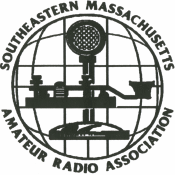 The Southeastern MA Amateur Radio Association has agreed to assist the Dartmouth Police Department by allowing a law enforcement radio receiving antenna to be placed on top of the club’s tower.
The Southeastern MA Amateur Radio Association has agreed to assist the Dartmouth Police Department by allowing a law enforcement radio receiving antenna to be placed on top of the club’s tower.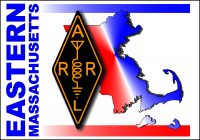


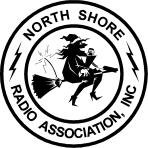 The
The 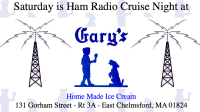 A local Northern MA amateur has hit upon a unique idea to promote his ice cream business–and, ham radio. Gary Frascarelli, W1GFF, proprietor of “Gary’s Home Made Ice Cream” in East Chelmsford has established what he calls “Ham Radio Cruise Night.” Hams are encouraged to visit his store every Saturday night between 5-8 p.m. to show off their mobile rigs, and bring along GOTA rigs. Frascarelli says “on site hook-ups for an HF sloper antenna and 2m/440 antennas are available.”
A local Northern MA amateur has hit upon a unique idea to promote his ice cream business–and, ham radio. Gary Frascarelli, W1GFF, proprietor of “Gary’s Home Made Ice Cream” in East Chelmsford has established what he calls “Ham Radio Cruise Night.” Hams are encouraged to visit his store every Saturday night between 5-8 p.m. to show off their mobile rigs, and bring along GOTA rigs. Frascarelli says “on site hook-ups for an HF sloper antenna and 2m/440 antennas are available.”


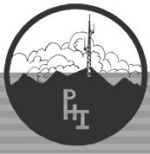 Members of the Waltham Amateur Radio Association recently embarked upon a project to benefit the Courage Center Handiham program, and to honor the memory of long-time member and Silent Key, Laurie Cote, KC1BN.
Members of the Waltham Amateur Radio Association recently embarked upon a project to benefit the Courage Center Handiham program, and to honor the memory of long-time member and Silent Key, Laurie Cote, KC1BN. The
The 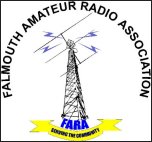 Members of the
Members of the  Den Connors, KD2S, the first president of Tucson Amateur Packet Radio (
Den Connors, KD2S, the first president of Tucson Amateur Packet Radio ( Steve Schwarm, W3EVE writes:
Steve Schwarm, W3EVE writes: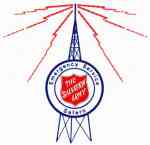 Frank Murphy, N1DHW writes:
Frank Murphy, N1DHW writes: The
The